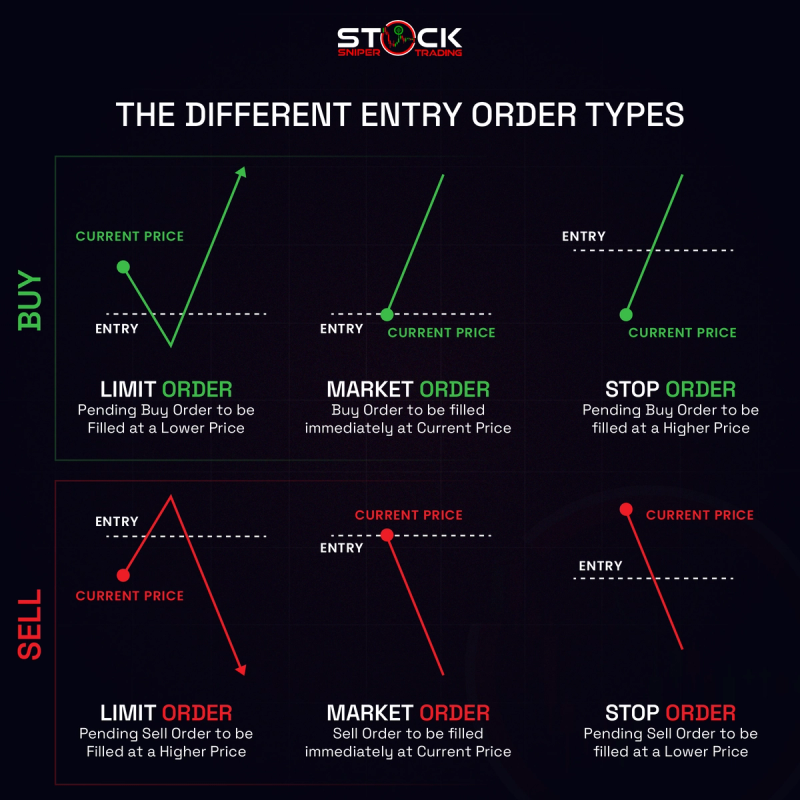
Here are the main order types commonly used in forex trading:
1. Market Order: This is the simplest order type. It allows traders to buy or sell a currency pair at the current market price. Market orders are executed immediately, which is beneficial when speed is essential.
2. Limit Order: A limit order is set to buy or sell a currency pair at a specified price or better. For example, a buy limit order is placed below the current market price, while a sell limit order is above it. This allows traders to control the price at which they enter or exit a position.
3. Stop-Loss Order: This is an order placed to limit potential losses on a trade. A stop-loss order is set at a specific price, and once the market reaches this level, the order becomes a market order and is executed to close the trade.
4. Take-Profit Order: This order is used to automatically close a trade when the market reaches a specified profit level. It helps traders lock in profits without needing to monitor the mar
Why are these order’s important in trading
Understanding different order types in forex trading is crucial for several reasons:
1. Risk Management: Order types like stop-loss and take-profit orders help traders manage their risk by automatically closing positions at predetermined price levels. This helps minimize potential losses and protect profits, which is essential for long-term trading success.
2. Execution Control: Limit orders allow traders to have more control over the prices at which they enter or exit trades. By setting specific price levels, traders can avoid unfavorable market conditions and achieve better entry and exit points based on their analysis.
3. Strategic Flexibility: Different order types enable traders to develop and implement various strategies. Whether looking to enter the market at a specific price, lock in profits, or prevent excessive losses, having a range of order types helps traders adapt to different market conditions and scenarios.
4. Automation: Orders such as take-profit, stop-loss, and trailing stops allow traders to automate their trading strategies. This can be particularly beneficial in the fast-moving forex market, where prices can change rapidly. Automation helps reduce emotional decision-making, ensuring that traders stick to their plans.
5. Market Conditions Adaptation: Understanding when to use specific order types can help traders navigate different market conditions, such as volatility or trends. For instance, in a volatile market, using limit orders can help avoid slippage, while stop orders can provide quick entry or exit as prices change rapidly.
6. Psychological Advantage: By employing risk management tools (like stop-loss and take-profit orders), traders can alleviate some of the psychological pressures associated with trading. Knowing that actions are taken automatically can help traders stick to their strategies without being swayed by emotions during market movements.
7. Improved Trading Discipline: Using defined order types can promote discipline in trading. Traders are less likely to make impulsive decisions and are more likely to stick to their plan, leading to more consistent results over time.
In summary, different order types enhance a trader's ability to manage risk, control trade execution, automate strategies, and maintain discipline, all of which are vital for achieving success in forex trading.

